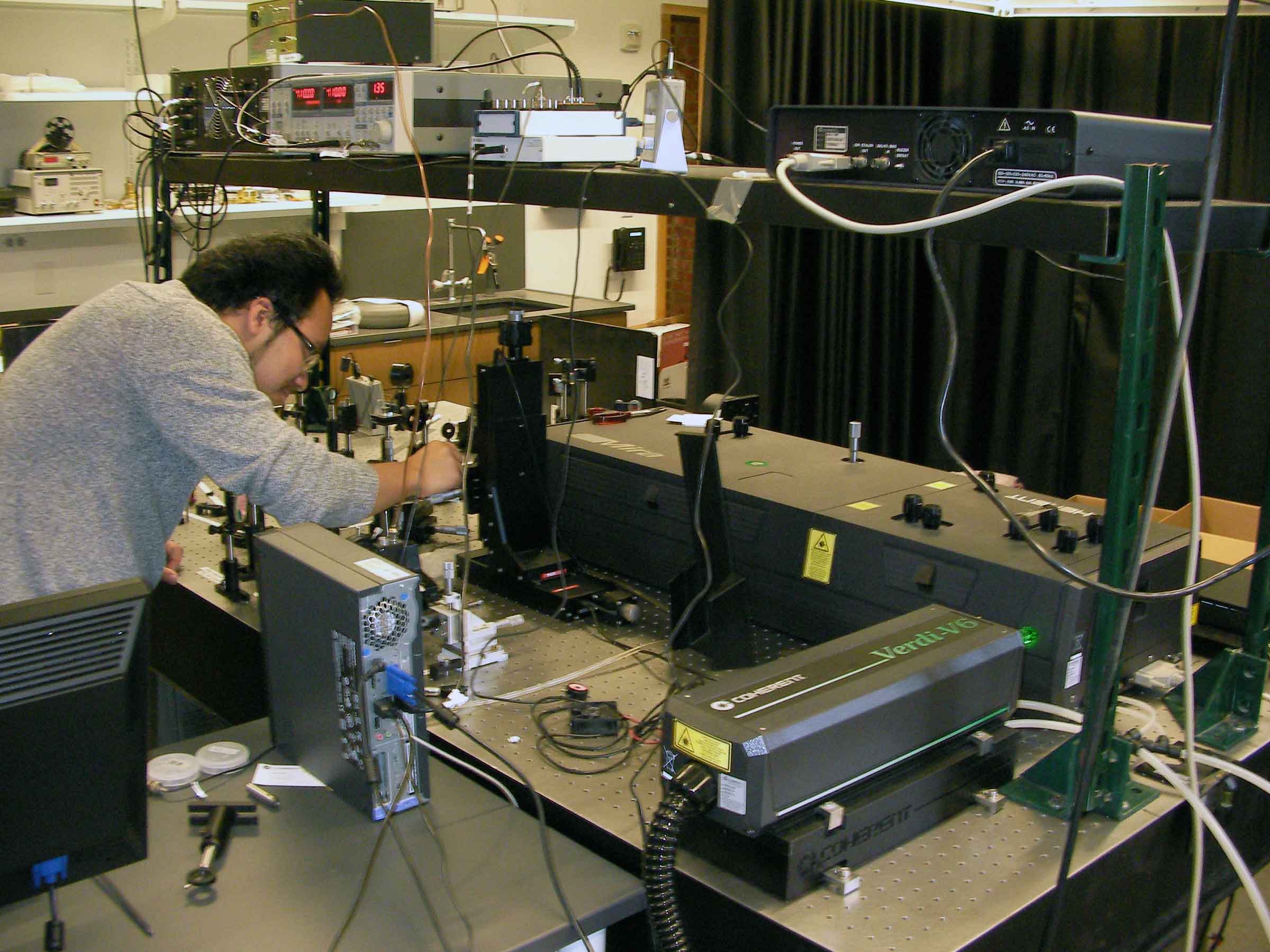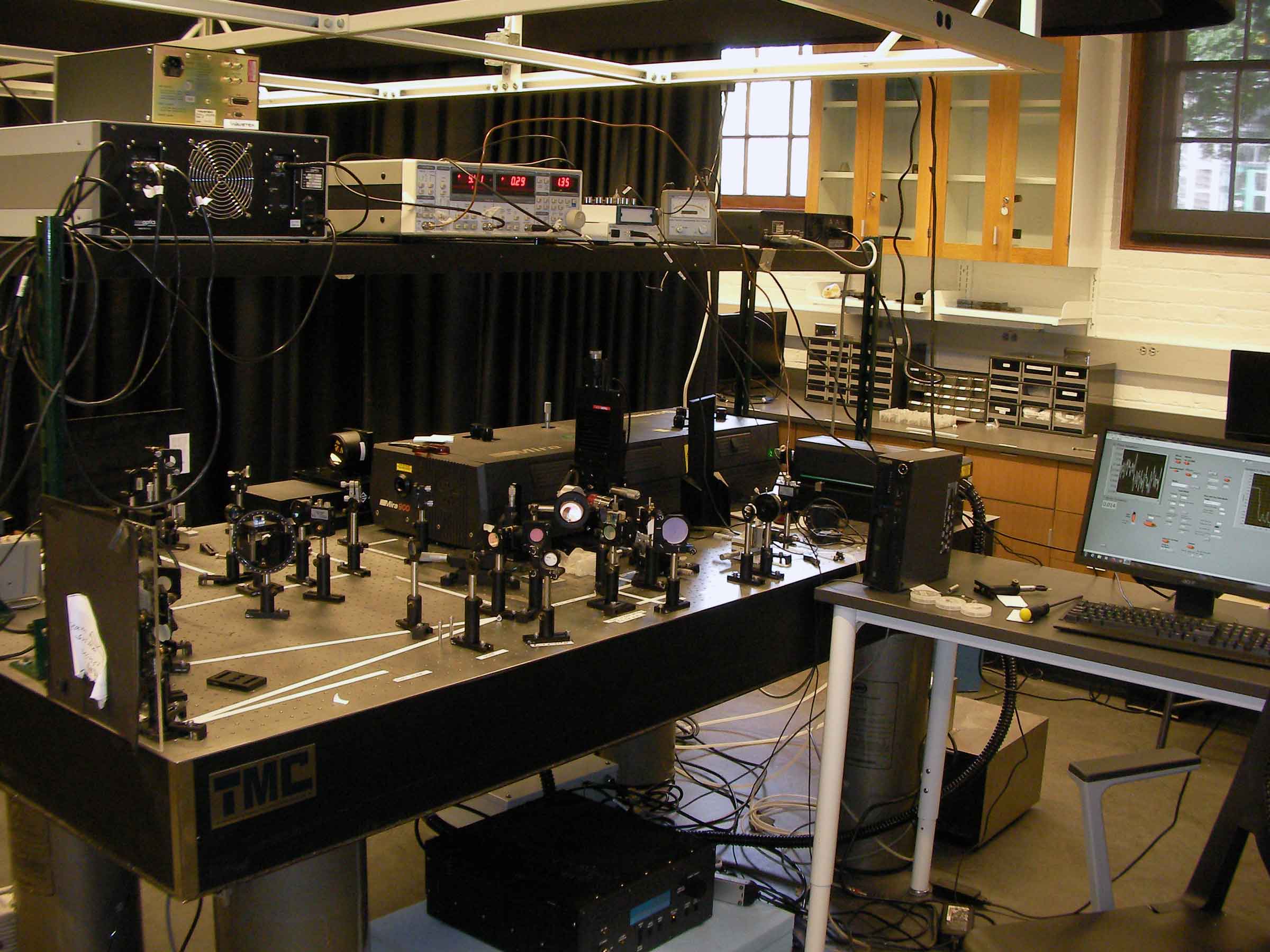Vassar Ultrafast Optics Laboratory
An ultrafast laser is capable of producing optical pulses that are less than 1 picosecond (1×10-12 seconds) in duration. This remarkable tool allows us to make measurements of phenomena that occur on extremely rapid time scales. With this type of temporal resolution, we can investigate the physics of very small, nanometer (1×10-9 meters) sized objects. Here are a few snapshots from the ultrafast optics lab in room A01 in the basement of Sanders Physics:

The Pump-Probe Experiment: The pulses from an ultrafast laser can be split into two beams: a pump beam that excites the sample, and a probe beam that measures changes in the reflectivity or refractive index of the sample. A mechanical delay stage in the probe arm allows us to slightly change the arrival times of the probe pulses with respect to the pump pulses, giving us a measure of the ultrafast physics of the sample.

We accomplish all this with a 6 Watt Coherent Verdi diode-pumped solid state laser that pumps a titanium-doped sapphire laser that emits its optical energy in the form of very short (0.1 ps—thats less than a millionth of a millionth of a second!) pulses for use in a number of exciting experiments.
Equipment
- An ultrafast laser capable of producing pulses that are 100 femtoseconds in duration
- An optical cryostat that allows temperature control down to a few degrees Kelvin
- A high vacuum sputtering system for making nanometer thick metal layers
- COMSOL, a finite element modeling software package
- A lot of little lenses and mirrors that get the laser beam to do what we need it to do